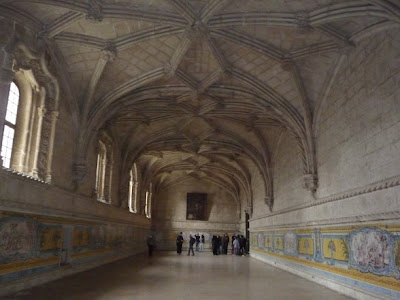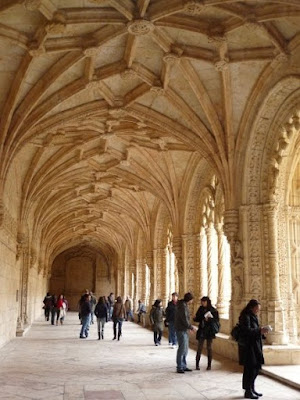 |
| West facade and tower; the building is so hemmed-in, Medieval-style, there is no vantage point from which you can see much more of the exterior than this |
 |
| A last judgement in one of the chapels; the middle right panel shows those going to hell (always our favorite) including the very famous adulteress with the flaming crotch |
 |
| More of the ceiling hole decoration |
 |
| In the Treasury, this is the 8 foot silver and gold monster they parade around the city annually for some sort of special Eucharist |
 |
| Central nave |
 |
| Unicorn misericord in the choir; there were scores of such secular and sometimes risque figures in the misericord section (where you put your bottom isn't holy) |
 |
| Here you can see the tiered nature of the choir seating... misericordia, then the battle scenes, then famous Spanish bishops, then figures from the Bible, specifically Christ's ancestry |
 |
| The altar, totally over the top (and a lot of gold from Peru and Mexico, one assumes) |
 |
| The Baroque organ; there was also a neo-classical one... |
Toledo Cathedral is billed as Spain's finest. It certainly was the most interesting we have seen here so far. One of the chapels holds 18 El Grecos plus many other masters, Spanish and Italian. The Treasury is small but studded with, um, treasures. The best part, for us, was the choir, which was hands-down the very best cathedral choir we have ever seen. I am sure we spent more time in this remarkable building than most infidels. Photography was not permitted, but guards were sparse and not particularly interested, everybody else was openly shooting pix and movies, so we indulged ourselves a bit too.













































